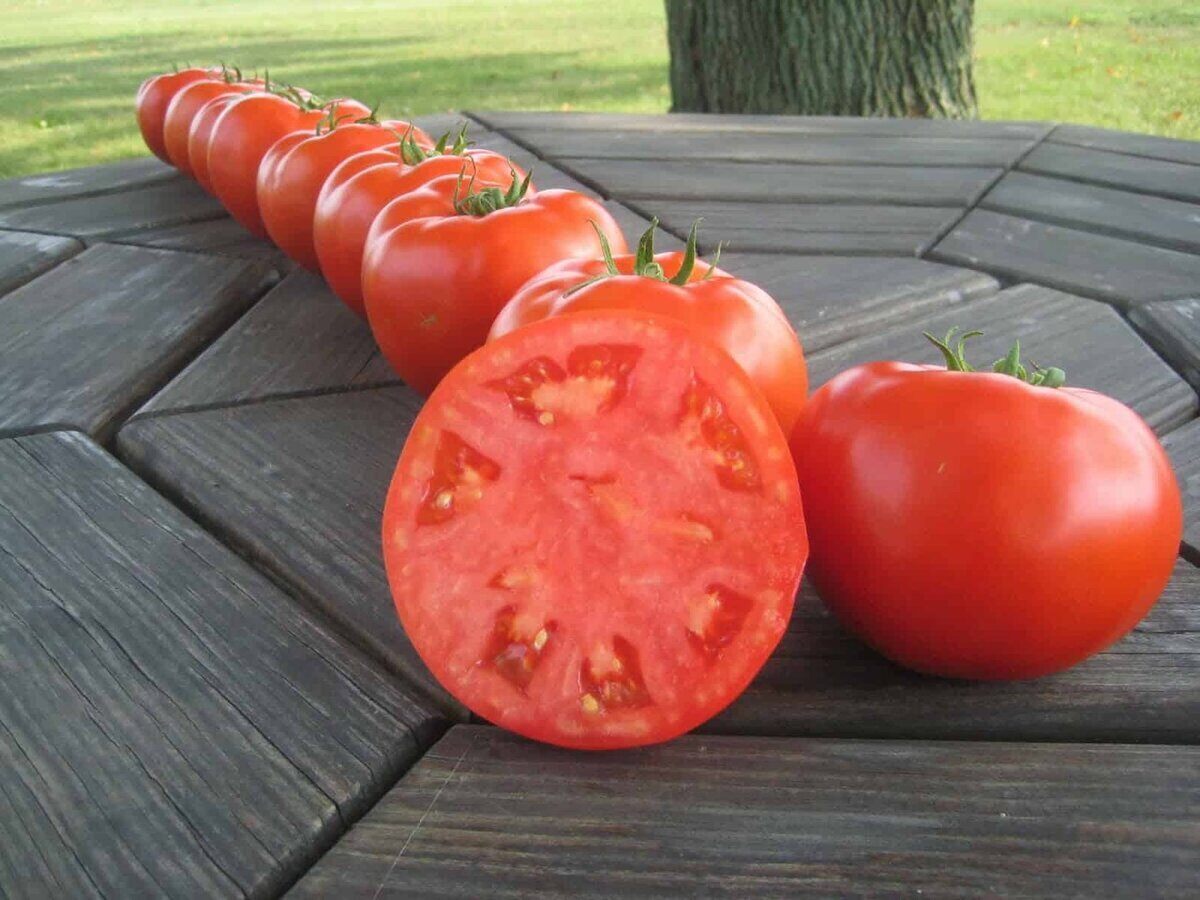
If you’ve been lusting after your neighbor’s luscious red tomatoes, make this the year you’ll grow your own. In this Beginner’s Guide to Gardening, we’ll talk about some garden basics and offer tips bound to make you successful, even if you’ve never dirtied your hands in a garden.
Maybe you’re concerned about the loss of butterfly habitats, and you want to plant flowers that support the winged beauties. Maybe you’d just like to cut a nice bouquet from your garden. Herbs? You can grow those, too, and again, this Beginner’s Guide to Gardening has you covered.
You’ll learn which veggies to grow from seeds or transplants. We’ll explain different plant groups, such as annuals and perennials, and suggest no-fail ones to grow. We’ll cover where the best place in the landscape is to plant a garden and why.
If you’ve never had a garden before, it can seem overwhelming. It needn’t be.
Here’s a tip: Avoid jumping in, committing to grow everything from seed. Starting seeds indoors is challenging. First-time gardeners are more likely to succeed if you buy transplants.
Now let’s get started with our Beginner’s Guide to Gardening:
Where to Plant Your Garden
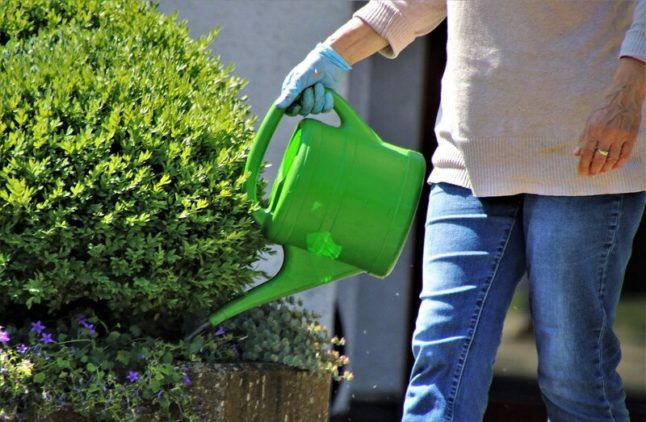
In real estate and gardening, it’s all about location, location, location. Picking the right spot in the sun for your flowers and greenery is half the battle. It helps, too, to pick a gardening spot with a water spigot in reach or a short walk away.
Other tips:
- Lots of Sun: Most flowering plants, including vegetables, need at least 8 hours of direct sun a day. Lettuces, spinach, and other greens tolerate 4 to 6 hours of direct sun.
- East-West Alignment: If possible, position the garden to run east-west so you can take advantage of the south sun exposure.
- Can You Dig It? Avoid areas with tree roots, poor drainage, sidewalks, or other spots that may be difficult, if not impossible, to dig. If the best sun is in one of these locations, consider raised garden beds or container gardens there rather than an in-ground garden. No dirt to dig in? Container gardens will fill the bill on a sunny patio or balcony.
- Nearby Water Source: Make sure there’s an outdoor spigot nearby so you can water the garden.
- Keep it Low Maintenance: Choose disease-resistant, drought-resistant, and low-maintenance plants to make caring for your garden easy.
What size garden?
- Start Small: Avoid the tendency to have a huge garden, especially if this is your first one. An 8- to 10-square foot garden is a good starting size for a family of four.
- 3-Feet Wide: Keep the bed or row about 3-feet wide and whatever length you want. At 3-feet deep, you can reach in halfway from each side to harvest vegetables or flowers without walking on the bed.
Plant size estimates
- Tomato, pepper, eggplant, and cabbage need about 1 square foot for each plant. Plan on staking tomatoes and peppers.
- Allow squash to vine among and under neighboring plants.
- Grow lettuces close together. They can be planted under taller plants like tomatoes and peppers.
- Grow peas, green beans, and cucumbers on trellises, stakes, fencing or other fixtures. Growing plants “up” is a good practice for small urban gardens.
Tools you’ll need
- Digging Tools: Purchase the best digging tools you can afford. Spades or shovels are useful for digging holes for trees and shrubs and digging garden beds. A shovel blade is rounded into a point at the end. The bowl shape of the blade makes it a good choice for scooping and moving soil and other material. A spade’s blade is straight at the bottom and is good for digging and edging beds. The choice is usually a personal preference.
- Hoes for Weeding: All gardens have weeds now and then, so you might need a traditional hoe or stirrup hoe to keep unwanted plants under control.
- Hand Pruners: Buy a good pair of hand pruners. There are two types: bypass and anvil. Bypass pruners work like scissors. The anvil type crimps what’s being cut and there some risk for damaging plant tissue. Bypass pruners are your best bet for almost all uses. These are used to cut back plants and remove dead or damaged small branches and twigs.
- Planting Tools: Buy a metal trowel, mattock, or garden knife, which are good for digging planting holes for seedlings, annuals, and other small plants.
- Watering Can or Garden Hose: You’ll need a water device, such as a watering can or garden hose. Get a shower-head type nozzle for the can or the hose. This nozzle delivers a lot of water without washing the plants from the soil.
There are dozens of other tools you could get, such as a garden rake or wheelbarrow, but they may not be needed in your first year, especially if you take the advice to start small.
Preparing Your Garden
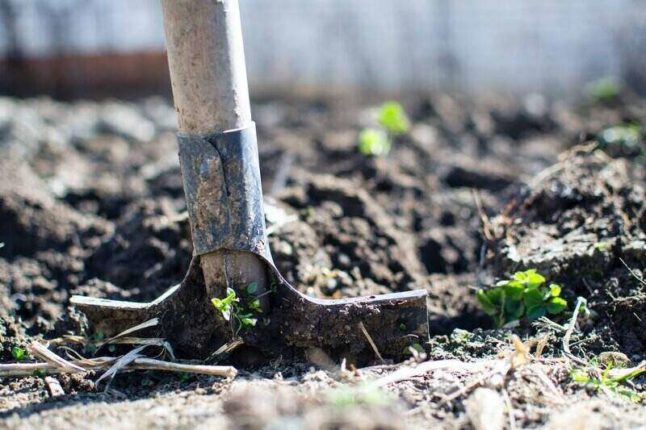
The more you garden the more you’ll realize the soil is everything when it comes to growing plants. Ideally, the soil should be loamy and rich in organic matter.
There are a couple of ways to get the ideal soil. Almost any soil type will be improved by compost, chopped leaves, and rotted manure, whether it’s hard-as-rock clay or dry, loose sand. Changing the quality of the soil takes several years. An application of organic matter can be made in spring and fall.
Traditional dig
- Dig the garden about 10 or 12 inches deep. Turn over the soil and break up any clumps with the shovel.
- Add compost or rotted manure to the soil surface and lightly churn it in.
- Let the soil settle for a day or so before planting.
- Once the bed is dug, avoid walking on it because that compresses the soil, making it more difficult for roots and nutrients to get through. Create pathways with wood chips or other natural mulch, if needed. Plant away.
Easy no-dig
- Get Planter’s Mix: An easier way is to get what’s called a planter’s mix from your local landscape supplier. This is usually a mix of soil, compost, and other organic matter.
- Size (of Your Garden) Matters: Give the supplier the dimensions of your garden with a depth of 10 to 12 inches.
- Smother Any Weeds: If there’s grass or weeds where you want the garden, lay down newspapers, brown grocer bags or cardboard before applying the planter’s mix. The paper will smother the weeds.
- Spread the planter’s mix where you want the garden. Smooth it out and let it settle for a day or so. Don’t walk on the bed. Plant away.
- No-Dig Is Less Destructive: Another advantage of this method is you’re not disturbing what’s called the weed-seed bank, which can be several inches below the soil surface. When digging the soil, you bring those seeds to the surface where they are likely to germinate and grow.
Seeds or transplants?
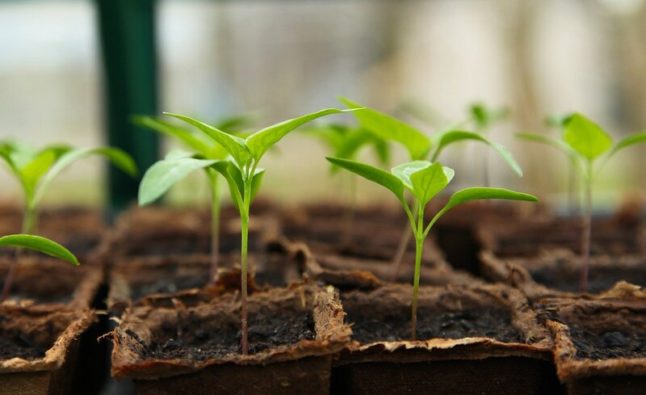
Some veggies are easy to grow by sowing seed directly in the garden and some are easier when planted as seedlings. Seedlings, also called transplants, can be found at most garden centers, beginning in early spring. Whichever veggies you choose, be sure to fertilize according to label directions.
Direct sow seeds for:
- Beans
- Carrots
- Cucumbers*
- Lettuces and greens*
- Peas
- Potatoes
- Radish
- Squash*
* Can also be purchased as transplants
Buy transplants of:
- Broccoli
- Brussels sprouts
- Cabbage
- Cauliflower
- Eggplant
- Peppers
- Strawberries (look for ever-blooming types)
- Tomatoes
Plant groups
Annuals
Their goal is to grow, bloom, set and disperse seed, then die, all in one growing season. Transplants make growing annuals super easy. Annuals can be found in garden centers, beginning in spring and through summer and fall.
Perennials
Perennials survive for two or more years and include a wide range of plants, including those for shade and sun. Perennials are readily available at garden centers throughout the growing season.
Bulbs
Daffodil, tulip, hyacinths, and allium are bulbs. Most bulbs are planted in fall for flowers the following spring or summer.
Vines
Beans, morning glories and clematis are examples of vine. Vines either climb or trail and they can be annual or perennial.
Woody plants
Trees, shrubs, and certain vines, including several groundcovers, fall into this category.
Pollinator garden plants
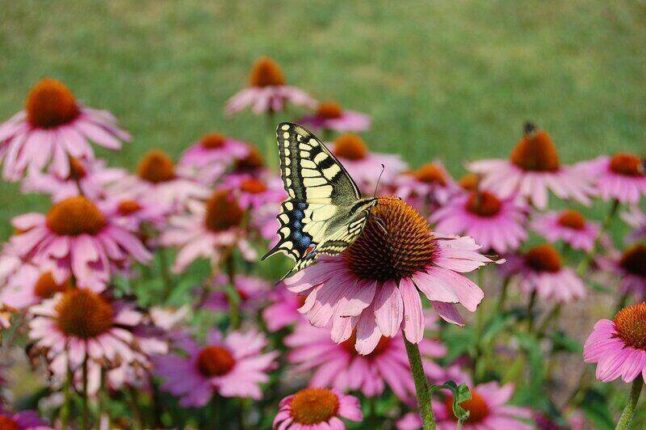
A plant sampler for butterflies and other pollinators. These also are good cut flowers. Buy transplants and plant in the ground or in containers. Fertilize according to label directions.
Top 5 annuals for butterflies
- Cosmos
- Marigolds
- Petunias
- Salvia
- Zinnia
Top 5 perennials for butterflies (buy transplants)
- Aster
- Black-eyed Susan
- Butterfly weed
- Coneflower
- Coreopsis
When to Plant your Garden
Air and soil temperatures tell you when to plant your garden. Visit the USDA Zone Hardiness Map to learn your growing zone. Your growing zone will tell you what cold temperatures plants should be able to endure.
To learn your temperature planting schedule, visit your county extension office’s website.
What’s next after planting your garden? Tending your garden – watering, weeding, and watching your plants grow, and flowers bloom. You may have guests checking out your gardening work too – as butterflies, bees, and hummingbirds visit your yard. If you need help designing and installing a new garden, or help maintaining your current one, call a local landscape pro today.
Main Photo: Mountain Merit, a 2014 All-America Selection, is a great tasting tomato for slicing.
Photo courtesy of All-AmericaSelections.org